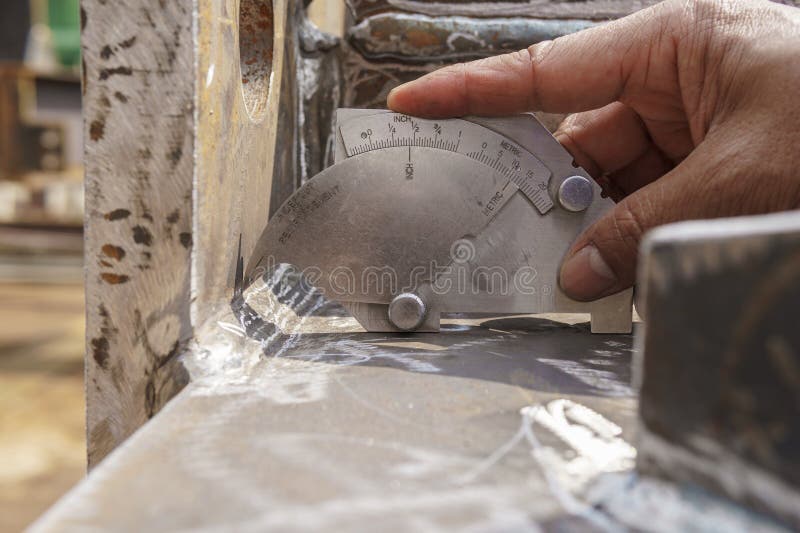Gauge Fillet Weld Basics: Finest Practices and Common Mistakes
Gauge Fillet Weld Basics: Finest Practices and Common Mistakes
Blog Article
Fillet Weld Layout Techniques: Optimizing Joint Performance and Aesthetics for Structural Stability
In the realm of architectural design and construction, the relevance of fillet weld layout methods can not be overemphasized. By diligently considering variables such as weld account optimization, material option, joint preparation methods, welding procedure effectiveness, and aesthetic improvement approaches, designers and producers can attain a harmonious balance in between performance and appearance in their bonded structures.
Weld Account Optimization


Attaining an ideal weld profile entails a thorough consideration of variables such as product thickness, joint configuration, welding placement, and preferred welding speed. Additionally, the choice of suitable welding parameters, such as voltage, existing, and take a trip rate, is essential in controlling the form and dimensions of the fillet weld. Utilizing innovative welding techniques, such as pulse welding or robot welding, can further fine-tune the weld account to meet certain style requirements and high quality requirements.
Basically, weld account optimization is a fundamental element of fillet weld style that directly affects the total performance and integrity of welded joints in architectural applications.
Product Choice Considerations
When taking into consideration material choice for fillet weld style, the compatibility of the base metals is a vital factor influencing the structural integrity of the joint. It is important to choose products that not only bonded together properly but additionally have comparable mechanical residential or commercial properties to make sure the load is equally dispersed in between the weld and the base metals. Welding materials with vastly different properties can result in issues such as stress and anxiety focus, early joint failing, or fracturing.
Furthermore, the environment in which the welded framework will certainly operate must be thought about when picking materials. Factors like rust resistance, temperature variations, and exposure to chemicals can all affect the long life and efficiency of the weld joint. By selecting materials that appropriate for the designated application and atmosphere, the total longevity and dependability of the welded joint can be substantially boosted.
As a result, comprehensive factor to consider of product compatibility and ecological variables is critical in making sure the weld joint's strength, sturdiness, and overall architectural stability.

Joint Preparation Methods
Thinking about the critical duty product choice plays in making sure the architectural integrity of fillet weld joints, it is necessary to execute specific joint prep work techniques that enhance the connection in between the base steels. Joint preparation is a vital action that straight influences the he has a good point high quality and stamina of the weld. One basic technique is the cleansing of base steels to remove any type of impurities like corrosion, oil, or paint that might endanger the weld's honesty. This can be achieved through methods such as grinding, cord brushing, or chemical cleaning.
Additionally, tack welding the parts in place before the final weld aids keep positioning and reduces distortion during the welding procedure. By thoroughly following these joint prep work techniques, welders can improve the overall performance and looks of fillet weld joints while ensuring architectural soundness.
Welding Process Effectiveness
Reliable welding procedures are vital for attaining optimal productivity and top quality in fillet weld fabrication. Procedures like gas steel arc welding (GMAW) and flux-cored arc welding (FCAW) are frequently made use of for fillet welds due to their flexibility and rate.
Regular calibration of welding machines, inspection of consumables, and upkeep of welding lanterns can avoid downtime and rework, ultimately saving time and sources. Trained welders are much more adept at readjusting parameters, troubleshooting issues, and preserving constant weld quality.
Visual Improvement Approaches
To maximize the top quality of fillet weld construction, executing aesthetic improvement techniques can play an important role in ensuring accuracy and precision throughout the welding process. Aesthetic improvement techniques include different techniques focused on boosting the appearance and top quality of fillet welds. One typical approach is using back purging systems to remove oxidation on the backside of the weld, resulting in a cleaner, more aesthetically pleasing surface. In addition, employing proper lighting setups in the welding area can enhance presence, enabling welders to monitor the weld pool and ensure regular bead formation. Aesthetic help such as weld size determines and amplifying lenses can aid in examining weld accounts and dimensions precisely. The usage of contrasting marking products or temporary adding can assist in aligning and placing the work surfaces specifically prior to welding. By integrating these visual enhancement methods into the welding process, welders can accomplish not just structurally sound fillet welds however additionally aesthetically appealing outcomes that fulfill industry standards.

Final Thought
In conclusion, enhancing fillet weld design involves mindful consideration of weld account, material selection, joint preparation, welding procedure efficiency, and aesthetic enhancement approaches. By implementing these methods, architectural integrity can be boosted while also attaining aesthetic charm. It is necessary to prioritize both efficiency and visual appeals in fillet weld style to ensure the general high quality and longevity of the joint.
By thoroughly considering elements such as weld profile optimization, product selection, joint preparation techniques, welding procedure performance, and aesthetic enhancement engineers, methods and producers can achieve an unified equilibrium between capability and look in their bonded frameworks.In the world of fillet weld layout, optimizing the weld profile plays an important duty in making more tips here certain structural honesty and performance. The weld account, which consists of the size and shape of the weld cross-section, straight influences great post to read the circulation of anxiety and load-bearing capability within the joint. It is necessary to select products that not just weld with each other successfully however likewise possess comparable mechanical buildings to make certain the tons is evenly dispersed in between the base and the weld metals - Gauge Fillet Weld.In verdict, maximizing fillet weld design involves mindful factor to consider of weld account, product choice, joint preparation, welding procedure effectiveness, and visual improvement methods
Report this page